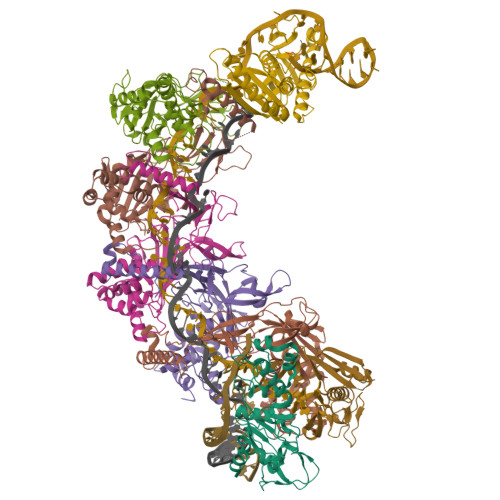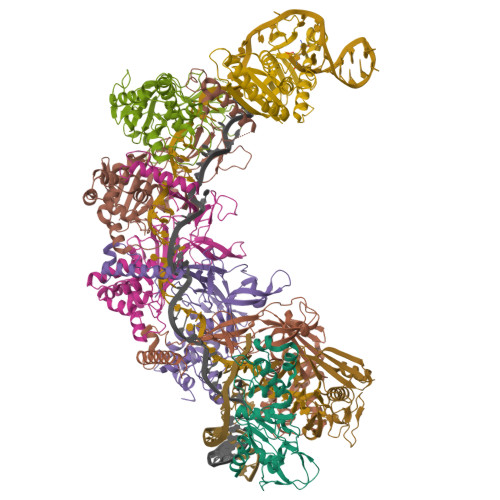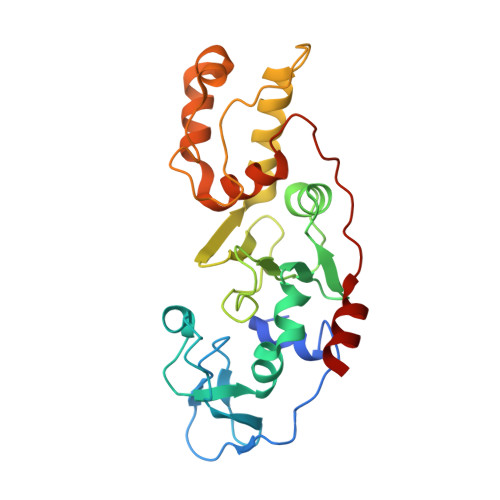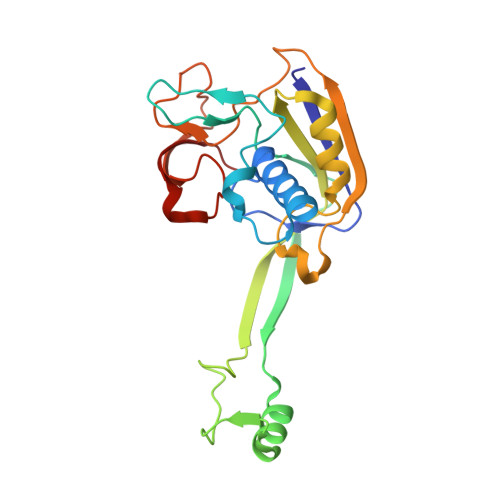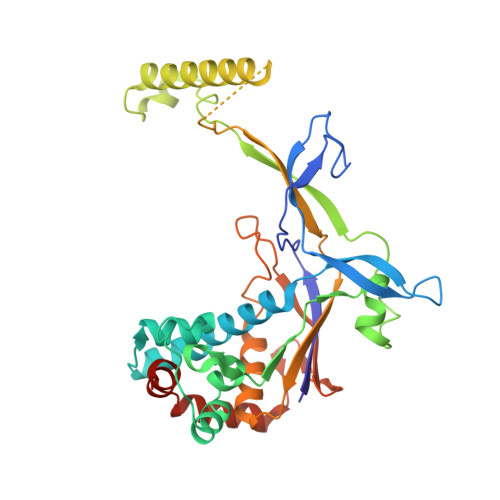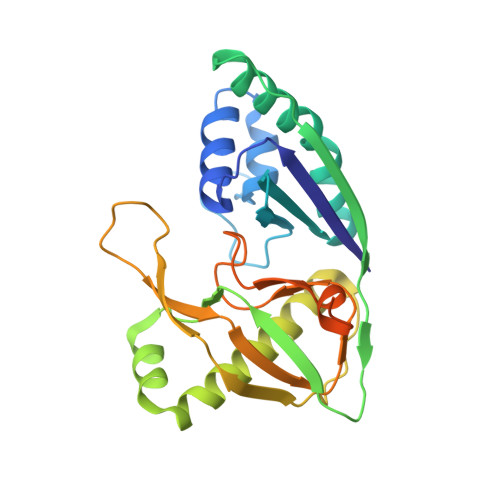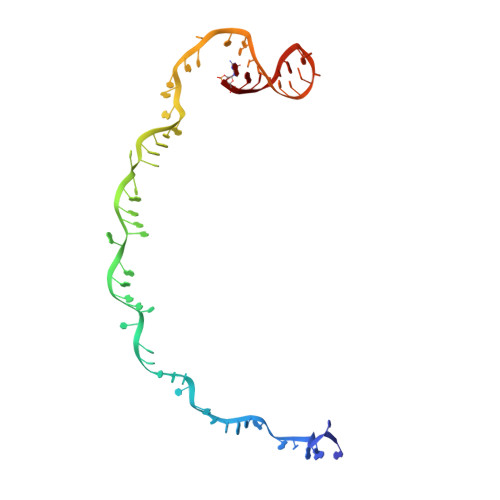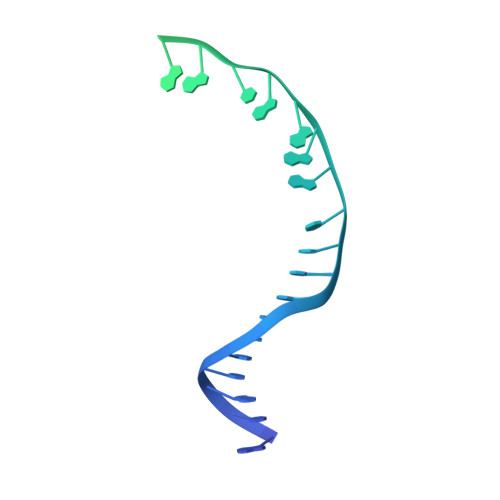Type IV-A CRISPR-Csf complex: Assembly, dsDNA targeting, and CasDinG recruitment.
Cui, N., Zhang, J.T., Liu, Y., Liu, Y., Liu, X.Y., Wang, C., Huang, H., Jia, N.(2023) Mol Cell 83: 2493-2508.e5
- PubMed: 37343553
- DOI: https://doi.org/10.1016/j.molcel.2023.05.036
- Primary Citation of Related Structures:
7XEX, 7XF0, 7XF1, 7XFZ, 7XG0, 7XG2, 7XG3, 7XG4 - PubMed Abstract:
Type IV CRISPR-Cas systems, which are primarily found on plasmids and exhibit a strong plasmid-targeting preference, are the only one of the six known CRISPR-Cas types for which the mechanistic details of their function remain unknown. Here, we provide high-resolution functional snapshots of type IV-A Csf complexes before and after target dsDNA binding, either in the absence or presence of CasDinG, revealing the mechanisms underlying Csf crRNA complex assembly, "DWN" PAM-dependent dsDNA targeting, R-loop formation, and CasDinG recruitment. Furthermore, we establish that CasDinG, a signature DinG family helicase, harbors ssDNA-stimulated ATPase activity and ATP-dependent 5'-3' DNA helicase activity. In addition, we show that CasDinG unwinds the non-target strand (NTS) and target strand (TS) of target dsDNA from the Csf crRNA complex. These molecular details advance our mechanistic understanding of type IV-A CRISPR-Csf function and should enable Csf complexes to be harnessed as genome-engineering tools for biotechnological applications.
Organizational Affiliation:
Department of Biochemistry, School of Medicine, Southern University of Science and Technology, Shenzhen 518055, China.








